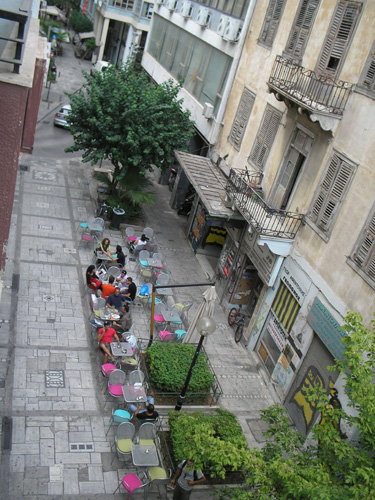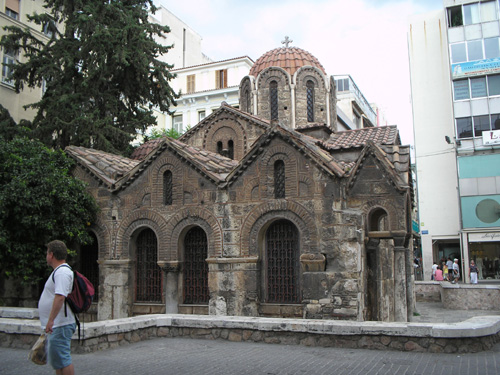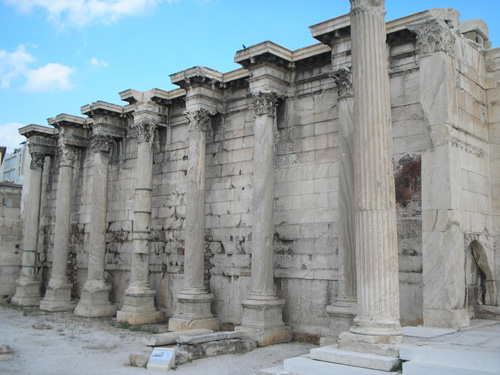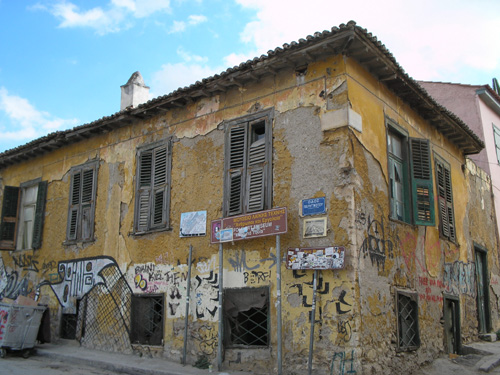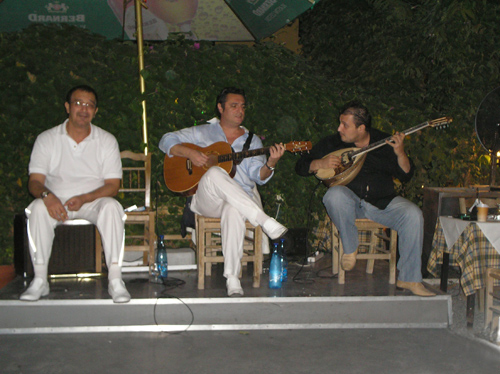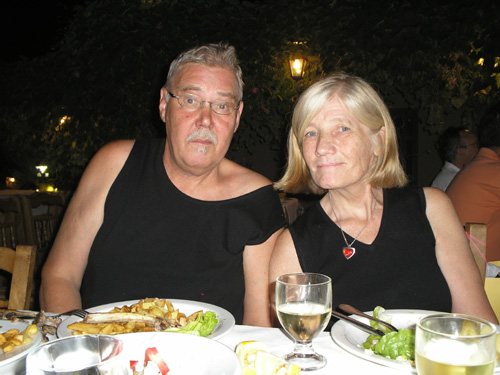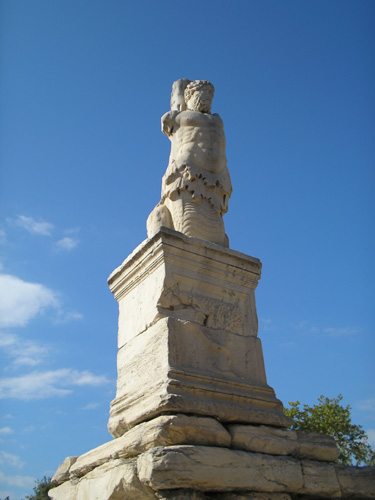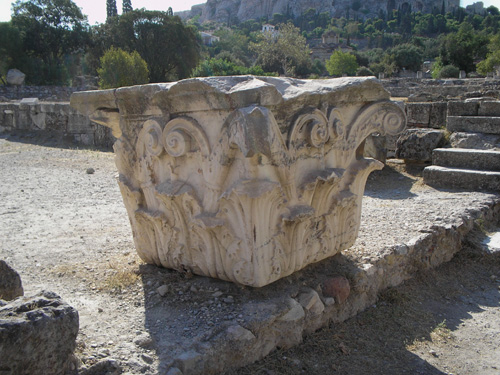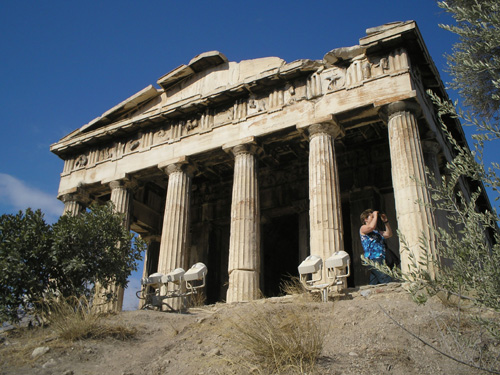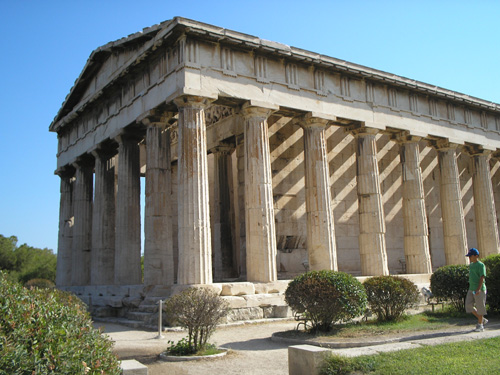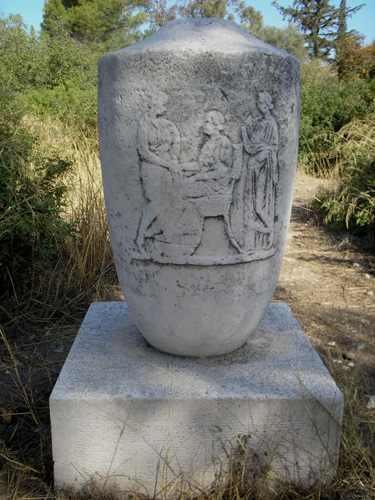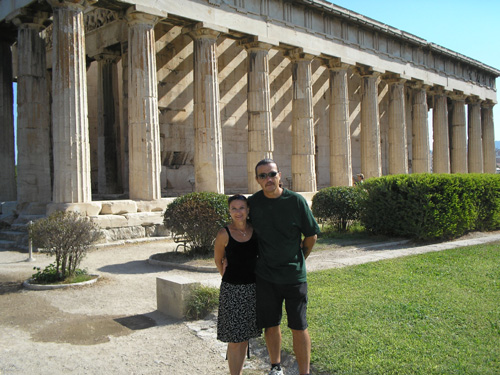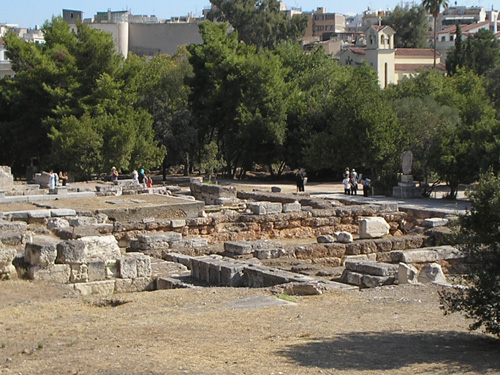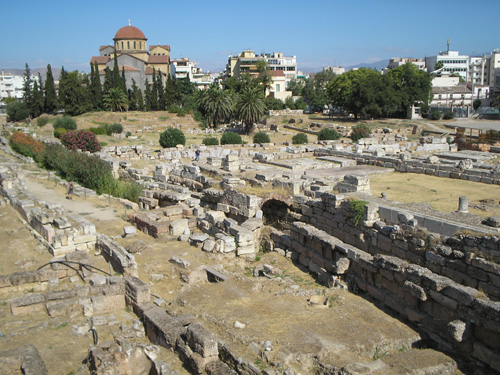 Athens: balmy, busy, and refreshingly fresh. From the airport, a lengthy metro ride into the city zoomed us to the Monastiraki stop, just a few blocks from Hotel Tempi, our home for the next couple of days. My friend, Nicoletta, had stayed there over 20 years ago and laughed when I told her we had reservations. She remembers a funky little place with cots for beds. Not so now. It is still a bargain, but with real rooms and real beds — even our own modern bathroom with a shower that showers the whole of the bathroom along with you. A tiny balcony offered a view down onto the street teeming with pedestrians and tables. Looking right, over the hotel’s sign, you could catch a glimpse of the Parthenon, especially pretty at night.
Athens: balmy, busy, and refreshingly fresh. From the airport, a lengthy metro ride into the city zoomed us to the Monastiraki stop, just a few blocks from Hotel Tempi, our home for the next couple of days. My friend, Nicoletta, had stayed there over 20 years ago and laughed when I told her we had reservations. She remembers a funky little place with cots for beds. Not so now. It is still a bargain, but with real rooms and real beds — even our own modern bathroom with a shower that showers the whole of the bathroom along with you. A tiny balcony offered a view down onto the street teeming with pedestrians and tables. Looking right, over the hotel’s sign, you could catch a glimpse of the Parthenon, especially pretty at night.
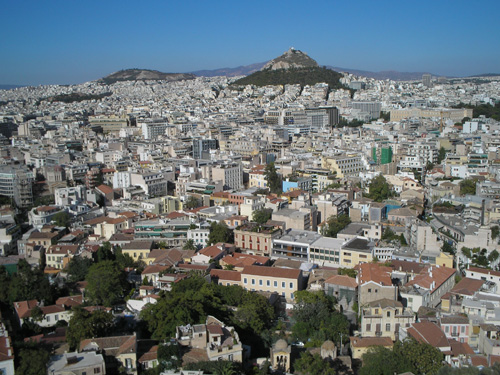
Back in Athens for the first time since our very first trip to Europe in 1996, we were eager to see the city post-Olympics. The efficient and sparkling subway system had only been in the beginnings of construction 11 years ago. The city now has a sense of order, but still maintains its cultural color. Even the air seems less polluted.
I’m sure you have noticed we are not nappers. Why waste daylight when the world is a few steps out your door? So we walked, absorbing the sights: a mechanic and his tools spilling his work space out into a busy street, the ubiquitous “Bagabonds” (selling purses and sunglasses) stalking tourists on the sidewalk, old men perched on wicker chairs flipping worry beads, wheeled carts heaped with nuts and mounds of sesame-covered pretzels, street-side braziers brimming with roasting corn.
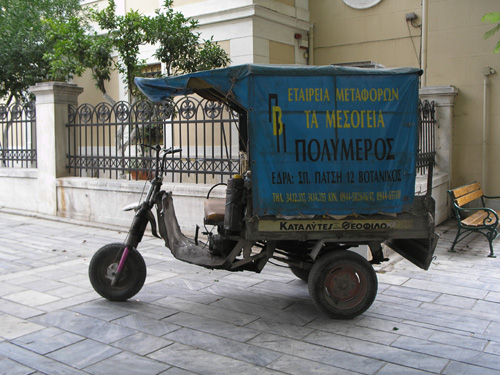
One stout-hearted man wheeled a dolly groaning under the weight of a huge dresser down the middle of a busy street, cars coming at him. Two people rode one motorcyle balancing a chair between them. Someone was washing the front of his car, while at the same time, two guys were struggling to shove a fridge into its seatless back.
Spectacular views of the Parthenon flashed in and out of sight as we wandered the Plaka district, nosing into its various shops. Buzzing with activity at the foot of the Acropolis, this quarter is indisputably the most interesting and vibrant in all of Athens.

As we walked, named and unnamed ruins sprouted here and there between the “newer” constructions of the neighborhood. No doubt, an entire ancient city sleeps beneath modern Athens, waking now and then to poke a creamy column up between the later buildings.
Reflecting its history, the Plaka’s tangle of mostly pedestrian-only streets boasts a blend of Turkish and Greek architecture as well as a lively bazaar atmosphere. Souvenir shops abound. Almost out of place, a small antique shop appeared on a corner, filled to the rafters with objects from all over the world, including shelves of Nazi memorabilia. I was tempted to buy a small piece, but hesitated at carting that dubious energy around with me for the rest of the trip. Best to leave it tucked away in the shadows.
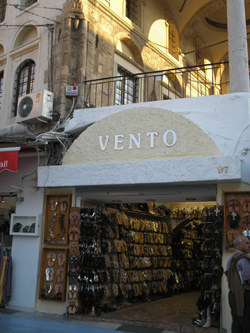 This was a shopper’s paradise, and we indulged in a souvenir hunting frenzy for a few friends and kids back home.
This was a shopper’s paradise, and we indulged in a souvenir hunting frenzy for a few friends and kids back home.
Someone had asked if we’d bring back a pair of Greek sandals, the kind that lace up the leg. Finding a little shop stacked with sandals of every style, I whipped out a drawn outline of her foot that she had made for me to insure the right size. The clerks found that quite amusing and set about helping me find just the right pair.
Trinkets of every description filled the shop windows, and I indulged in a key chain dangling the blue eye which wards off evil spirits. It now hangs in my office, keeping undesirables at bay.

